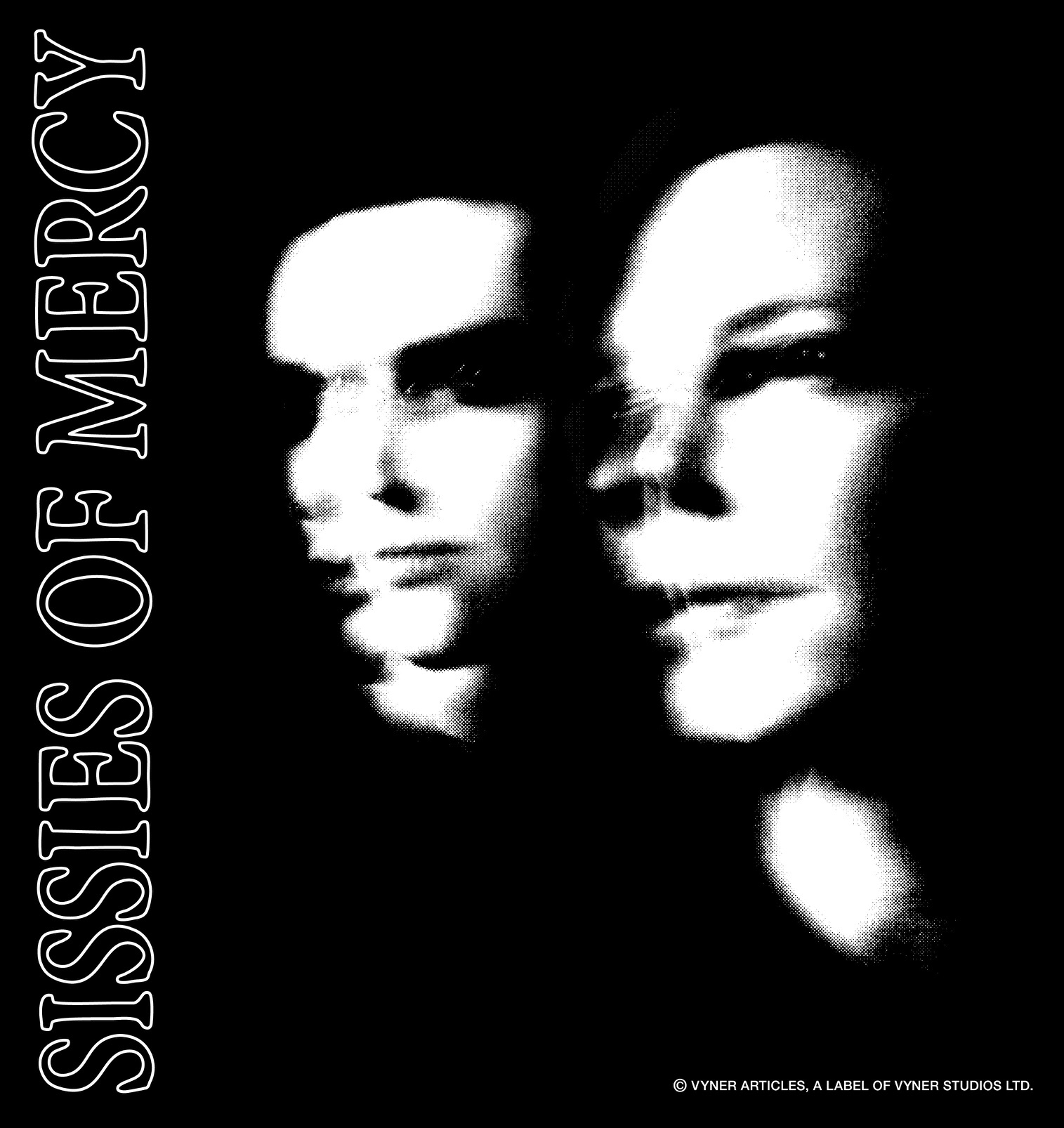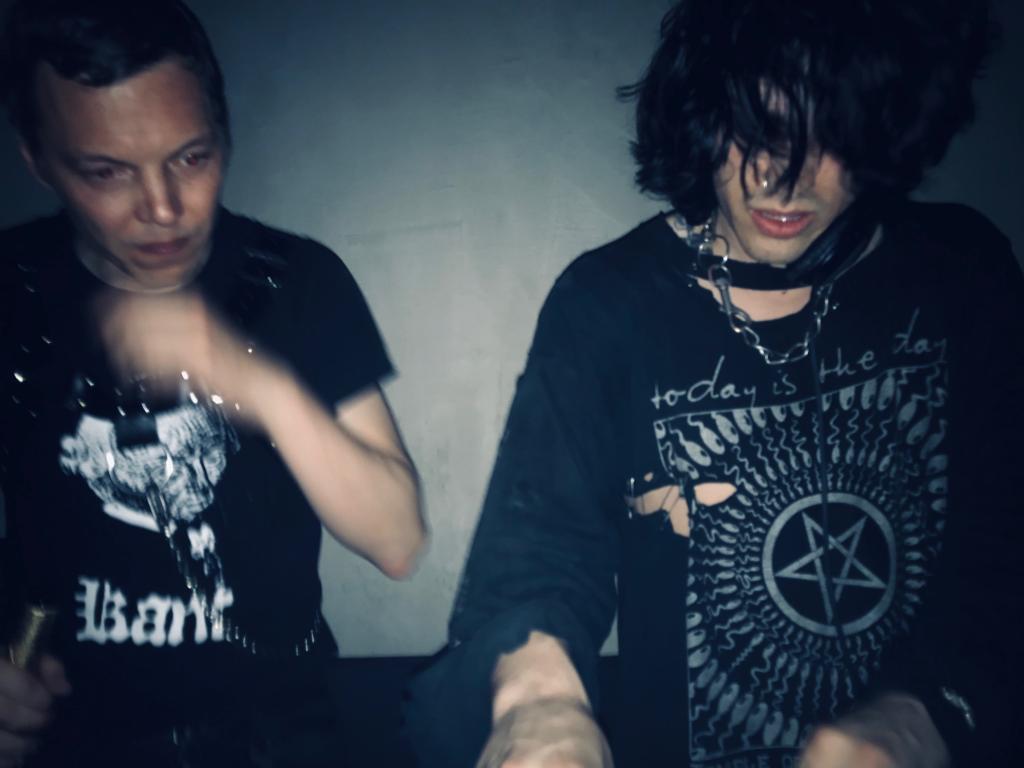Before interviewing DJ duo Sissies of Mercy, I ask them where they would like to meet. Their answer, unsurprisingly, is The Devonshire Arms, a dingy pub in Camden with a historically goth clientele that — while now attracting more of a metal crowd — still bears the scars of its past.
Unfortunately, while it’s the perfect backdrop for Alban Adam and Jordan Hemingway, both dressed in head-to-toe black even on a sunny Wednesday afternoon, it isn’t the ideal place to do an interview, with heavy metal blaring over the speakers. It also isn’t the first place you would expect to find a pair of fashion insiders: Alban, after all, is a creative consultant who has worked with Demna Gvasalia on Balenciaga’s social media among many others, while Jordan is a photographer and filmmaker has worked closely with Comme des Garçons and Raf Simons.
So how did they end up becoming the fashion industry’s new go-to goth rock DJ duo? Was it just a happy accident? “It’s all been somewhere between a happy accident and a terrible mistake,” laughs Alban. “We DJed a friends birthday in Paris back in January, and it just seemed like everyone had a lot of fun.” From there, the pair have performed in places as far-flung as Helsinki, while just last week, they DJed for a Marni party at Milan Fashion Week Men’s. Together they combine their distinct approaches to the goth genre (Alban is a self-described “old goth”, while Jordan is a “young goth”) to find a happy middle ground in their shared love of 80s death rock, as well as the movement’s later cybergoth iteration in the 90s.

The timing couldn’t be better, with goth style currently undergoing something of a revival in fashion. Recently designers like Undercover and Raf Simons have riffed on the world of horror films. A little further back, there was also the seismic impact of Shayne Oliver’s Hood by Air in the early 2010s — the cult label that is coincidentally returning later this year — and the infamous NYC club night Shayne became associated with, GHE20G0TH1K, that married classic goth style with the most avant-garde trends in hip-hop culture.
“Shayne is amazing,” says Alban. “He’s like an encyclopedia of goth music. In fact, there was one time where we took Shayne to Slimelight [a popular goth night in Islington] and Shayne was wearing blue jeans, which they don’t like, as they’re now trying to avoid tourists. They told him he couldn’t come in wearing jeans, so he turned around, took his jeans off and was like, ‘Am I goth enough now?’ and then just went in!” Adds Jordan: “I turned around and realised like he wasn’t wearing underwear either — now that’s goth.”
For both Alban and Jordan, there isn’t one ‘right’ way to do goth, as represented in their DJ alias Sissies of Mercy — a riff on their shared favourite goth band, the Sisters of Mercy — which gives goth a queer spin. “I always laugh when people tell me my work is super dark,” says Jordan. “I’m like, really? There’s loads of colour in there, you guys. But then I think about goth in a social context, and it’s a space where everyone is welcome, it’s a very undefinable thing. It truly is something that is so personal and specific to everyone so it’s undefinable in a lot of ways. It’s hard to say, ‘that’s exactly what it is’, because it is whatever it means for you.”

And despite having to navigate the strict door codes of their favourite goth nights, what Alban and Jordan are trying to translate from the goth scene to the fashion crowd is its sense of permissiveness. “These parties are one of the few places where I quickly felt at home because everyone is so friendly,” says Jordan. “It’s a community-based subculture and that’s what gives it longevity and makes it super special. The parties include people of every sex, colour, creed, gender and people with disabilities — we’re all welcomed as part of the community and we’re all there for what we love.”
For a new generation of goth acolytes, it’s a community spirit that’s welcome in the age of social media. “It’s all about the passion… I find it fascinating that an 18-year-old kid can teach you about the origins of goth: it’s not really documented so you can’t just Google it and find answers,” says Alban. “It’s weird how it’s not well documented,” Jordan adds. “For how prevalent and how long-lasting it is, there’s very little literature and documentation. It’s a word of mouth thing, but I guess that brings it back to the community and how strong the community is. We share knowledge through the community.”
But on whether projects like the Sissies of Mercy represent the future of goth, they are emphatic. “No way,” says Alban. “Goth is the thing that never dies, you can’t kill it. It’s the undead cockroach of music: it might be more popular at certain times, but it’s like a plant that blossoms every hundred years. You can never get rid of goth.”
